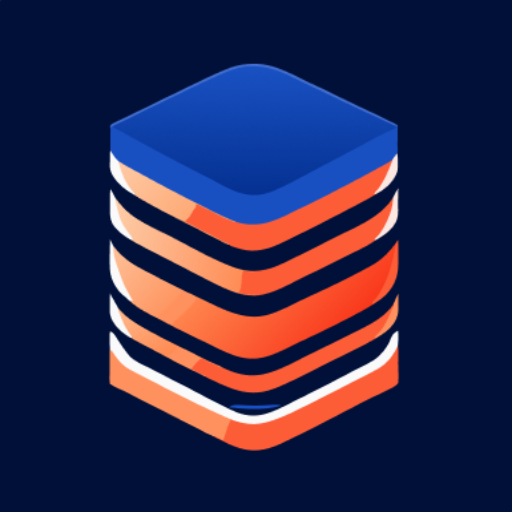PostgreSQL Assistant-expert advice on PostgreSQL structuring
AI-powered PostgreSQL database assistant
Expert in PostgreSQL data modeling and querying.
Show me an example of table inheritance in PostgreSQL.
Explain normalization in PostgreSQL.
Run a SQL query using Python.
What are the best practices for indexing in PostgreSQL?
Related Tools

SQL Expert
SQL expert for optimization and queries.

SQL Chat
Connect and chat with your databases without writing SQL code - Supports MySQL, PostgreSQL, MongoDB, SQL Server, Snowflake. by AskYourDatabase.
Postgres Expert
The GPT does act as an PostgreSQL Dataase Exrpert, It masters the knowledge of Postgres very well.
SQL+ 🔴VISUALIZE 🔴
🔴VISUALIZE 🔴DATABASES🔴 Design & Optimize SQL queries. Particularly good at SQL.

MySQL Maestro
Expert in MySQL, provides complex queries and utilizes advanced database functions.

MySQL Expert
Your personal MySQL assistant and query generator
20.0 / 5 (200 votes)
Introduction to PostgreSQL Assistant
PostgreSQL Assistant is a specialized version of the GPT model tailored for providing expert guidance and support in PostgreSQL database management. It is designed to help users understand complex database concepts, optimize database structures, and efficiently query relational data using PostgreSQL. The assistant is capable of addressing a wide range of database-related tasks, from basic SQL queries to advanced data modeling, indexing, and optimization techniques. By leveraging PostgreSQL's unique features like table inheritance, foreign key constraints, and advanced indexing methods, PostgreSQL Assistant serves as a valuable tool for database administrators, developers, and data architects who seek to create robust, scalable, and high-performance database systems. For instance, when a developer is unsure about the best way to structure a database schema to support a multi-tenant application, PostgreSQL Assistant can provide guidance on using table inheritance, partitioning, or foreign keys, explaining the trade-offs and benefits of each approach in the context of PostgreSQL's capabilities.

Key Functions of PostgreSQL Assistant
Schema Design and Optimization
Example
Designing a normalized database schema that efficiently supports complex queries while minimizing data redundancy.
Scenario
A company is developing a new e-commerce platform and needs to create a database schema that can handle millions of transactions per day. PostgreSQL Assistant helps by recommending an appropriate schema design that leverages normalization, indexes, and partitioning to ensure data integrity and performance.
Query Optimization
Example
Improving the performance of slow-running SQL queries through indexing, query rewriting, or using advanced PostgreSQL features like CTEs (Common Table Expressions) or window functions.
Scenario
An analyst notices that a key report is taking too long to generate. PostgreSQL Assistant can analyze the query, suggest indexing strategies, and recommend query modifications to significantly reduce execution time.
Data Modeling
Example
Using table inheritance and foreign keys to model complex relationships in a database.
Scenario
A healthcare provider wants to model patient records with specific information for different types of visits (e.g., regular check-ups, emergency visits). PostgreSQL Assistant can guide the design of an inheritance-based model where a 'visit' table serves as the parent, with specialized child tables for each visit type, ensuring data consistency and easy query access.
Ideal Users of PostgreSQL Assistant
Database Administrators
Database administrators (DBAs) are responsible for the installation, configuration, management, and optimization of databases. PostgreSQL Assistant offers these professionals expert advice on advanced topics like indexing, partitioning, and performance tuning. It assists DBAs in managing large-scale databases, ensuring they can maintain high availability, security, and optimal performance.
Developers and Data Architects
Developers and data architects involved in designing and implementing database solutions for applications will benefit greatly from PostgreSQL Assistant. It provides insights into efficient schema design, helps in the adoption of best practices for data modeling, and supports the creation of scalable, maintainable databases. This is especially valuable when dealing with complex applications requiring high concurrency, large datasets, or specialized indexing strategies.

How to Use PostgreSQL Assistant
Step 1
Visit aichatonline.org for a free trial without login, also no need for ChatGPT Plus.
Step 2
Familiarize yourself with PostgreSQL concepts like schemas, data types, and queries to optimize your interactions with the assistant.
Step 3
Prepare specific PostgreSQL-related queries, such as database design, optimization techniques, or data modeling scenarios, for detailed, expert-level responses.
Step 4
Leverage the assistant's capabilities for both learning and practical problem-solving, by asking it to run queries, suggest best practices, or explain complex concepts.
Step 5
Use the assistant regularly to refine your PostgreSQL skills, staying updated with the latest features and advanced techniques in database management.
Try other advanced and practical GPTs
広告で使える美人美女画像生成BOT
AI-Powered Beauty Image Generator

Bubble QA Bot
AI-powered guidance for Bubble development

FlutterFlow Sensei
AI-driven guidance for FlutterFlow developers.

AI Lawyer
AI-Powered Legal Assistance for Everyone

Insta Caption: image caption generator
AI-powered captions for every post

Anatomy Guide
AI-powered anatomical insights for everyone.

Arabic Mentor
Empowering your Arabic learning journey with AI.

Abbey
AI-driven assistant for all your coding and creative needs.
The Psychologist
AI-powered guidance for personal growth

Quote Canvas
AI-driven quotes, content, and creativity.

SQL Chat
AI-powered SQL assistant for seamless data management.

紫微斗数大师
AI-powered Astrology for Your Life

- Data Modeling
- Query Optimization
- Schema Design
- Advanced Queries
- Learning PostgreSQL
PostgreSQL Assistant: Frequently Asked Questions
What is PostgreSQL Assistant best used for?
PostgreSQL Assistant excels in providing expert advice on database structuring, optimization, and data modeling. It's ideal for complex queries, schema design, and understanding PostgreSQL-specific features such as table inheritance and indexing.
Can PostgreSQL Assistant help with SQL query optimization?
Yes, the assistant can guide you through optimizing SQL queries by suggesting the most efficient ways to structure them, recommending indexes, and identifying potential bottlenecks in your database.
Is PostgreSQL Assistant suitable for beginners?
While PostgreSQL Assistant is tailored for advanced users, it also supports beginners by explaining foundational concepts, providing examples, and offering step-by-step guidance on creating and managing databases.
How does PostgreSQL Assistant handle complex data modeling?
The assistant provides detailed advice on data modeling, including normalization, schema design, and the use of advanced PostgreSQL features like table inheritance and foreign keys. It helps you design scalable and efficient databases.
Can I run actual SQL queries through PostgreSQL Assistant?
Yes, you can simulate SQL queries using SQLite3 in Python to understand the practical applications of your queries, though the assistant focuses more on providing advice, explanations, and recommendations.